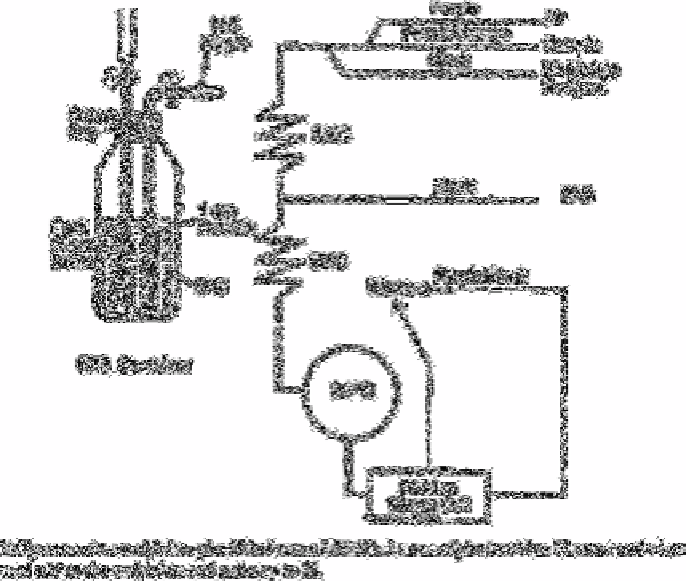Chemistry Reference
In-Depth Information
Fig. 2.36
Flow sequence for automated determination of phosphate
Source: Reproduced with permission from Elsevier Science [600]
extraction procedures. For direct methods cationic detergent caused considerable
interference, but there was little interference by biodegradable anionic detergents. The
ascorbic acid method is recommended for routine determination of phosphate in most
waters. For the extraction procedure the levels of cationic and non-ionic detergents must
not exceed 2 and 10mg L
−1
respectively. The maximal level of anionic detergents should
be 8mg L
−1
.
Problems with standard methods for the determination of phosphate by standard
molybdenum blue methods has prompted development of a method based on the use of
hydrazine-molybdic acid reagent [598].
Goulden and Brooksbank [599] have described an automated method for eliminating
arsenate interference in the determination of phosphate in non saline waters by the
molybdenum blue method. The arsenate is reduced to arsenite by thiosulphate in an
acidic medium before the colour-producing reagents are added.
Skjemstad and Rieve [600] have reported three automated procedures for the
simultaneous determination of phosphate, ammonia and nitrate plus nitrite at µg L
−1
levels in non saline waters. Phosphate is estimated by reaction with molybdate and
reduction to molybdenum blue with ferrous ammonium sulphate.
Throughout the methods, deionised water with a conductivity of less than 1µs (micro

Search WWH ::

Custom Search